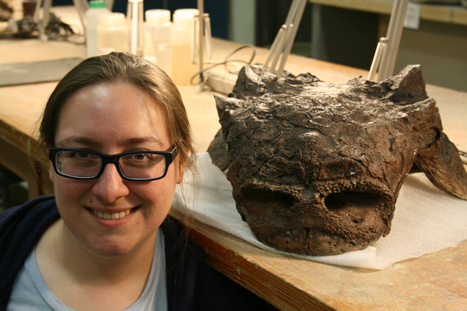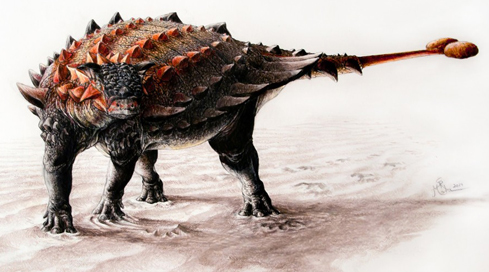Role Models in the Sciences – Go for it Girls!
One of the challenges faced by teaching teams is to encourage classes to adopt a more scientific approach to investigation and exploring the properties of materials. The new national curriculum of England places great emphasis on working scientifically and with subject areas like adaptation, rocks, fossils and natural selection now part of the science element of this new scheme of work, teachers might struggle to identify suitable role models for the children.
An Early Role Model
Mary Anning (1799-1847), might be a strong candidate for consideration when thinking of historical figures that can inspire and enthuse girls, but there are a number of fantastically dedicated female scientists around today, extending our knowledge life on Earth and long-extinct animals.
Take for example, Canadian Victoria Arbour, whose work on ankylosaurs is helping to unravel some of the mysteries surrounding these armoured dinosaurs. Victoria is happy to confess that she never grew out of her “dinosaur phase” and her career in palaeontology has taken her to some amazing places in a bid to excavate more fossilised bones. Victoria is currently working as a postdoctoral researcher at the North Carolina Museum of Natural Sciences and North Carolina State University (USA).
Providing a Role Model for Girls as Well as Boys when it Comes to Considering Science Careers
Picture credit: Angelica Torices
Dr Arbour Comments
Commenting on her current role, Dr Arbour stated:
“Every day I walk past a Tyrannosaurus skeleton to get to my office, and my office is part of the exhibits at the museum, which means I get to see people enjoying that same Tyrannosaurus as much as I do. In the summers I head out to the field to dig up dinosaurs in places like Utah, Alberta, and even sometimes Mongolia! The rest of the time, I’m thinking about qnkylosaurs, the armoured dinosaurs with lots of spikes.”
It’s important for educationalists to recognise the wide range of science careers that are now available and the tremendous contribution being made to palaeontology and related fields by women.
An Illustration of a Typical Armoured Dinosaur (Ziapelta sanjuanensis)
Picture credit: Sydney Mohr (Arbour et al. 2014, PLOS ONE:e108804).
Why the Ankylosauria?
Having undertaken her MSc and PhD degrees at the University of Alberta in Edmonton, a part of Canada with a wealth of Late Cretaceous dinosaur fossils to study, it’s not surprising that Victoria would find her academic career having a strong bias towards the Dinosauria, but why armoured dinosaurs (Ankylosauria)? After all, ankylosaur remains are relatively rare in central and southern Alberta compared to other ornithischians – the duck-billed dinosaurs and the horned dinosaurs for example.
Victoria explained:
“I became particularly interested in them [armoured dinosaurs] when I started to think about what kind of project I wanted to do for my MSc thesis. I kept seeing pictures in books of ankylosaurs using their tail clubs to defend themselves from predators and I wondered if there was a way we could figure out if they could have done that. Some of the first projects I worked on looked at how fast and hard ankylosaurs could swing their tail into something and what would happen to the tail when they smashed into another object.”
Dr Arbour’s research has revealed lots of different aspects about armoured dinosaurs, from naming new species to learning about ankylosaur biology and potential behaviour, even looking at how these plant-eaters moved between continents.
A Role Model for Young People
For any young boys and girls considering a career in the Earth Sciences, researchers like Victoria provide an excellent example of what can be achieved. It is important that teachers gain an appreciation of the growing number of female role models working in scientific disciplines. There’s no need to worry about running out of dinosaurs to study, as Victoria is the first to admit, once you try to answer one question, new ones keep popping up and we still have so much more to learn about these amazing creatures that once roamed our planet.
To view the range of educational replicas of iconic fossil animals available from Everything Dinosaur: Replicas of Fossil Animals.



